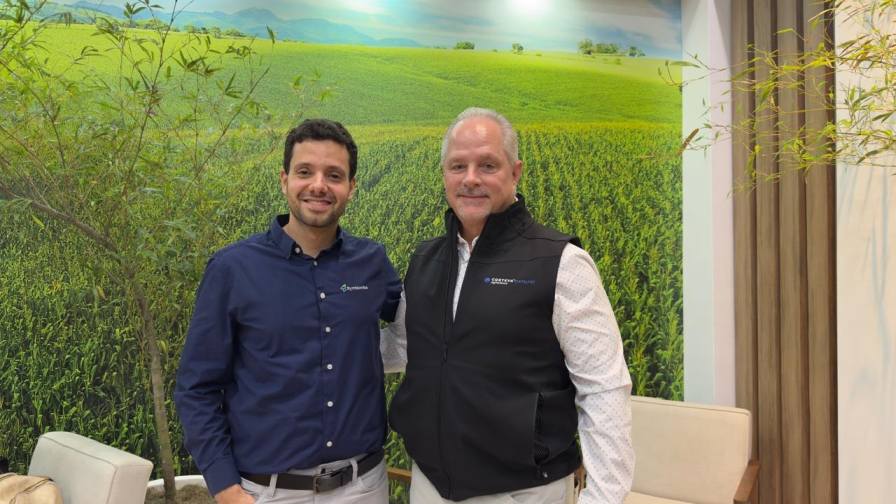The Resilience of the Commercial Farmer
Hail the commercial farmers! Year after year they keep doing the hard work for the rest of us, despite wildly shifting weather conditions and well-intended (but often counter-productive) regulations that can make a difficult job that much more demanding.
There are times when the life of a farmer can sound like the makings of a stand-up comedy routine. You know you’re a farmer when:
- You always have dirt on – and usually also inside – your boots.
- You can’t go to your kids’ school events because it’s harvest time.
- You plan your vacations around good weather – planting and harvesting weather, that is.
Somewhat less funny is that, as a farmer, your livelihood is likely at any time to be adversely affected by everything from weather to legislation. And yet, commercial farmers continue to do what they have to do, not just because it’s their job but because they’re quite literally putting food on people’s tables.
Weather is of course one of the greatest sources of frustration for the commercial farmer. Between droughts, floods, fires, frosts and other practical jokes from Mother Nature, it can be difficult for farmers to stay with a planting schedule. Domestically, that can deal them a real blow.
Then, enter government regulation. In some cases, it can be a help, at least in a limited way. In others, however, it’s a real hindrance that pulls at farmers’ coat-tails even as they try to work within the system.
Positive Examples of Government Involvement
In the best-case scenarios, examples of positive government intervention for farmers include the USDA Risk Management Agency’s Prevented Planting Coverage, and the Farm Service Agency’s Market Facilitation Program.
Prevented Planting Coverage makes payments to farmers if they are unable to plant an insured crop by the final planting date or late planting period. According to USDA, “when adverse weather prevents planting, a prevented planting payment is made to compensate for the producer’s pre-planting costs.” The coverage is a percentage of the guarantee on a timely planted crop, and varies by crop, depending on pre-planting cost estimates.
The Market Facilitation Program assists farmers and ranchers whose commodities are affected by “foreign retaliatory tariffs, resulting in the loss of traditional export markets.” Assistance is available for producers of certain crops, based on “a single-county payment rate multiplied by a farm’s total plantings of MFP-eligible crops in aggregate in 2019.” This can range from $15 to $150 per acre, “depending on the impact of unjustified trade retaliation”.
Such measures are fine, as far as they go. Unfortunately, as you can see, growers don’t get the full value for their crops, whether affected by weather or politics. And it still demands that farmers, now pinched by lower financial returns, must keep managing their land despite the economic shortfall. It would be tempting to simply let the land lie fallow, but if it is not properly cared for, farmers would simply face an even bigger economic hurdle the following year.
And for every legislative effort that attempts to shift some burden off of farmers’ shoulders, there are others that add to that burden in other ways.
Government and the California Farmer
Let’s consider California. That’s a fair example, because depending on your source, California is either the fifth or sixth largest economy in the world, and a significant portion of that economy comes from farming.
In fact, according to California Agricultural Statistics Review of 2017-2018, California remains the national leader in agricultural production and exports, with some $50 billion in cash receipts (up almost 6 percent from 2016). Agricultural exports in the state totaled over $20.5 billion, nearly twice what they were 10 years ago.
The restrictions that California government puts on farmers has repercussions, not just for California farmers, but for food production and commerce in general (and not just in the U.S.).
One California legislation that has made ripples in the farming community at large is California’s Proposition 65, or the Safe Drinking Water and Toxic Enforcement Act of 1986. Proposition 65 prohibits businesses from both exposing California residents to chemicals known in the state to be carcinogens, and from discharging those chemicals into the environment where they might pass into drinking water.
Proposition 65 raised eyebrows among farmers nationally as far back as 2017, particularly because the chemical glyphosate was one of the listed restricted chemicals. That led to a number of associations filing suit as co-plaintiffs against the California Office of Environmental Health Hazard Assessment, holding among other things that the listing would “devastate farmers who rely on glyphosate as a critical weed management tool.”
Co-plaintiffs ranged from the Iowa Soybean Association to the National Association of Wheat Growers to the National Corn Growers Association.
The complaint was dealt a blow last year when a 3-0 ruling from the Fifth District Court of Appeals in California ruled that the state could use outside standards in creating chemicals listings for Proposition 65.
In separate legislation, the USDA presented to California growers an opportunity to “to apply new and innovative agricultural emission reduction practices and technologies” under the Natural Resources Conservation Services’ Code 372 on the Mobile Agricultural Off-Road Diesel Engines.
Under Code 372, farmers can receive a payment for cutting diesel exhaust emissions by switching diesel-powered agricultural equipment for “like” equipment with engines “that meet or exceed federal, state, or local emission standards,” provided they meet eligibility requirements. To comply, “The participant must not purchase, make payments toward, or take possession of any new engine or equipment prior to receiving a fully executed contract.”
Again, this is a laudable from an environmental perspective, but the thought of farmers hanging in limbo while the contract is executed is not helping them make money from their farms in the meantime.
And yet, even with government regulations that give with one hand while taking with the other, farmers persist.
Technology Helps Do More With Less
So, every year, something new seems to be thrown at growers, and every year they weather literal storms and continue their planning, their field management and their weed mitigation strategies.
Looking to the future, farmers can lighten their own load by leveraging technology to do more with less. Certain products such as soil surfactants will appreciably lower water demand, while more bio-preferred, “softer” chemicals can help reduce reliance on conventional chemistry, especially pre-harvest. Together, that means fewer residues, and correspondingly fewer concerns about restrictions related to chemicals in drinking water.
Effectiveness with this type of strategy demands a mixture of chemicals, and also balancing of costs against the likely benefits. But in the end, appropriate application of technological solutions can provide a useful tool in the arsenal of today’s commercial grower.
So once again, let’s all give thanks and hail our resilient farmers, both domestically and around the globe. These stalwart and relentless people dedicate themselves year-in, year-out to feeding the world. For those of us who contribute to their work in any way, we owe it to them to continue finding ways to lessen their load and to support them in their tireless efforts to bring abundant, healthy foods to our tables.






